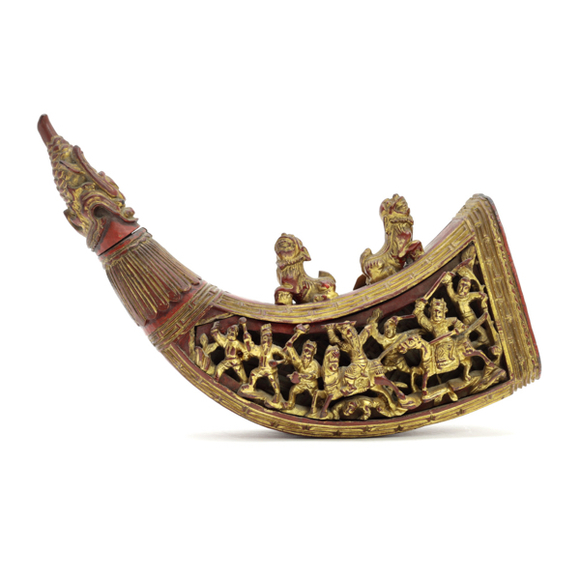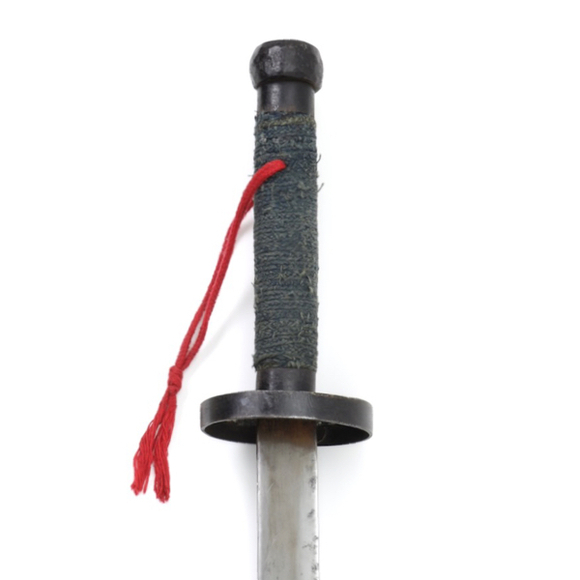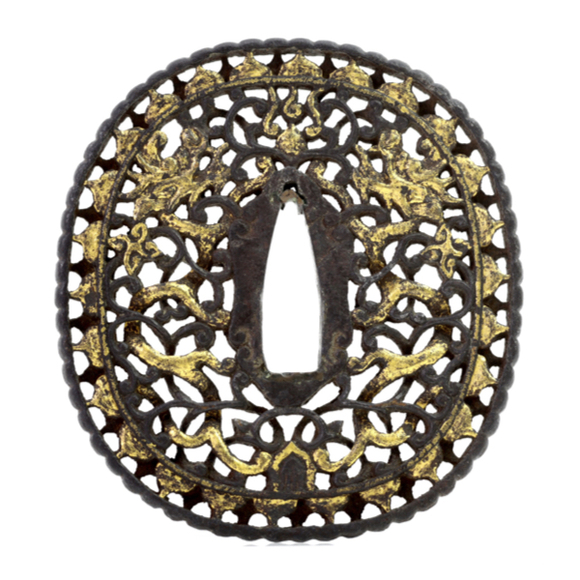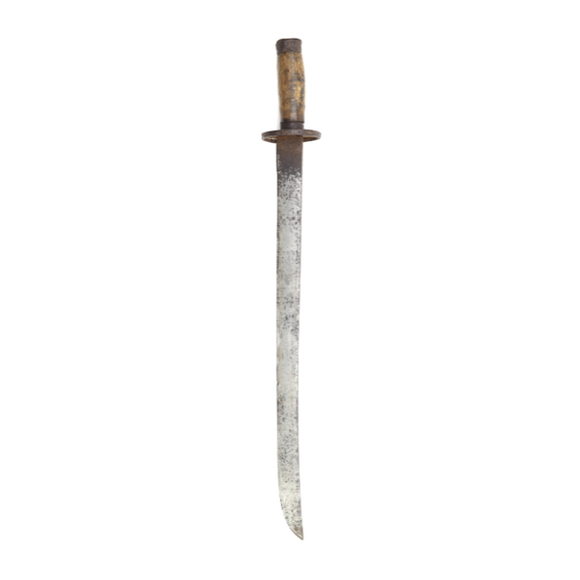With a golden damascened lock of the Indo-Portuguese type.

87.3 cm / 34.4 inch
70 cm / 27.6 inch
forte 7.5 mm
middle 5 mm
near tip 3 mm
forte 36 mm
middle 34 mm
near tip 31 mm
842 grams
China, Qing dynasty
Iron, steel, copper, brass, wood, leather, cotton
Blade 18th century
Mounts early 19th century
This sword has been sold.
Introduction
The yaodao, literally "waist-worn saber", was the sidearm of the officers and soldiers of the Qing dynasty.1 Most ranks got a certain amount of silver to purchase and maintain their own equipment. For some officers, these amounts went up to 20 taels.2. There were regulations for size, materials, decoration, and colors of scabbard and wrap, to which weapons for official assemblies had to apply. Some officers would have had more than one saber, so not all sabers are official regulation pattern types. Also, the choice of blade was largely free, as long as it had a certain size. Because of this, they tend to exhibit great variation in style.3
Notes to introduction
1. Also known as 佩刀 peidao after the 皇朝禮器圖式 (Huangchao Liqi Tushi) of 1766. This is a set of Qing regulations that uses nonstandard language for many weapons, choosing names often from ancient Chinese writings.
2. See Elliot, Mark C., "The Manchu Way", Stanford University Press, 2001.
3. Tom, Philip M. W., “Some Notable Sabers of the Qing Dynasty at the Metropolitan Museum of Art”, Metropolitan Museum Journal, Vol. 36, 2001.
This example
A very nice Chinese saber with an early 18th century blade with some very rare and interesting features. Of liuyedao form, the gently curved blade has a complex configuration of grooves and inlays. There is a main groove running over the middle of the blade that fades into the tip. A second groove, in segments, is running on the dorsal side of the blade. Eight segments in total, with between each segment one of the Eight Trigrams of the I-Ching, the "Classic of Changes", an ancient Chinese work of divination.
Between the center groove and the dorsal segmented line of grooves, running almost the entire length of the saber, is a long inlay of brass and copper. The metals are joined by twisting them together and grinding them to reveal the twisted core. It's a unique feature that I've never seen before. The tip has a false backedge with another groove inside it, a feature found on some sabers of the 17th and 18th century.
The blade is of inserted high-carbon steel construction with dramatic shuangxue, the cloudy effect caused by its heat treatment known in Japan as "hamon".
It comes mounted in a complete set of brass fittings of angular style, cast and subsequently brought to detail with drilling and chiseling. The fittings are probably several decades later than the blade, probably early 19th century. These fittings are later versions of the typical 17th-century openwork encountered on a number of sabers, the most famous of which that of early Qing emperor Hong Taiji himself who lived from 1592-1643. His sword, in turn, was based on Tibetan ironwork that came to the Manchus through the silk road trade, often as tribute by Mongol tribes that sought an alliance to the Manchus.
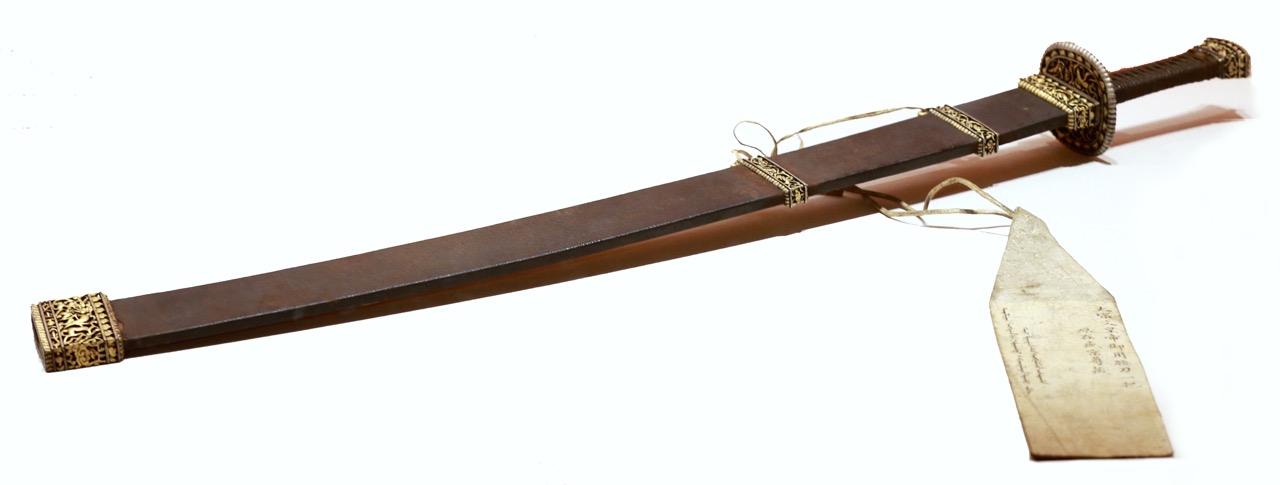
Hong Taiji's saber. Palace Museum, Shenyang, China P.R.
Condition
Scabbard body and handle were replaced by Philip Tom. In polish, also by Philip Tom. Blade in superb condition, no nicks or cracks. Some losses to the trigram inlays, as pictured.
Conclusion
An extremely rare Chinese saber with a complex blade with segmented grooves and a unique copper/brass twisted rod inlay. Its fittings are a later interpretation of the Tibetan openwork fittings on the saber of Hong Taiji. The blade quality is superb and remains in excellent condition.



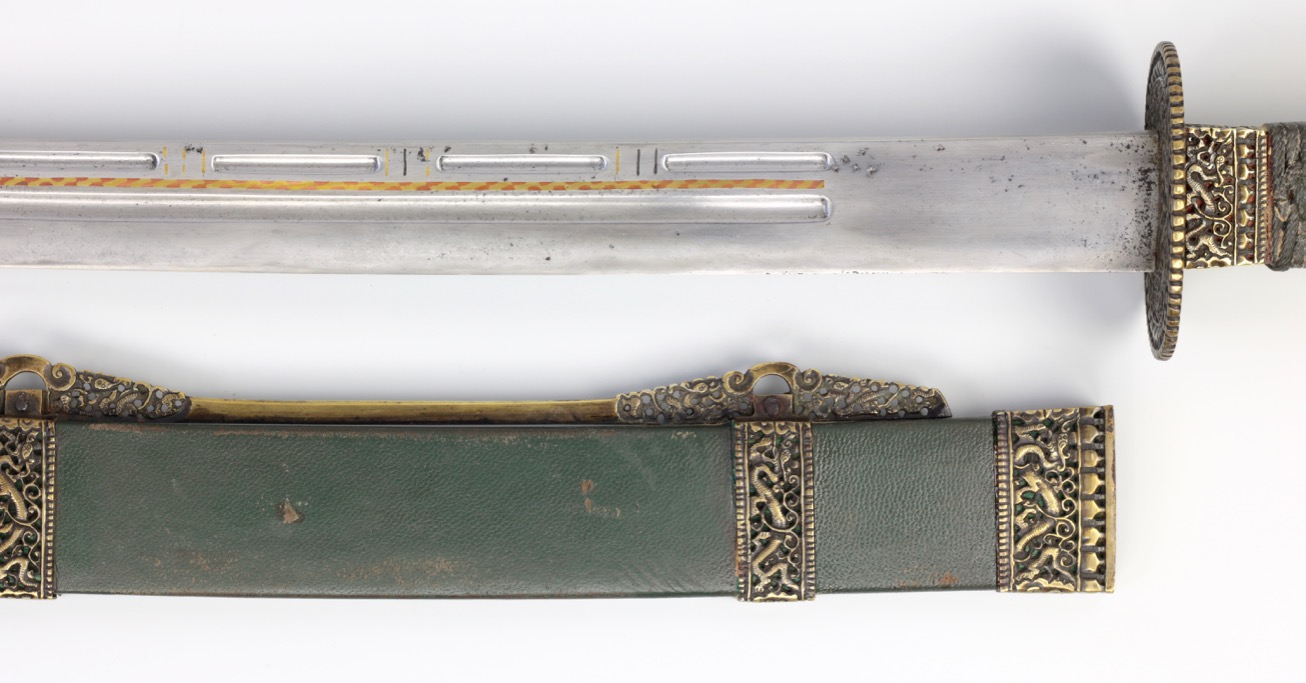





















Probably of Southern origin, with a straight blade and flaring tip.
In the style of northern work of the 16th and 17th centuries
A simple utilitarian weapon, probably made for rural martial artists or militia.
A standard pattern Qing military saber, but with the rare addition of a label in Manchu.


